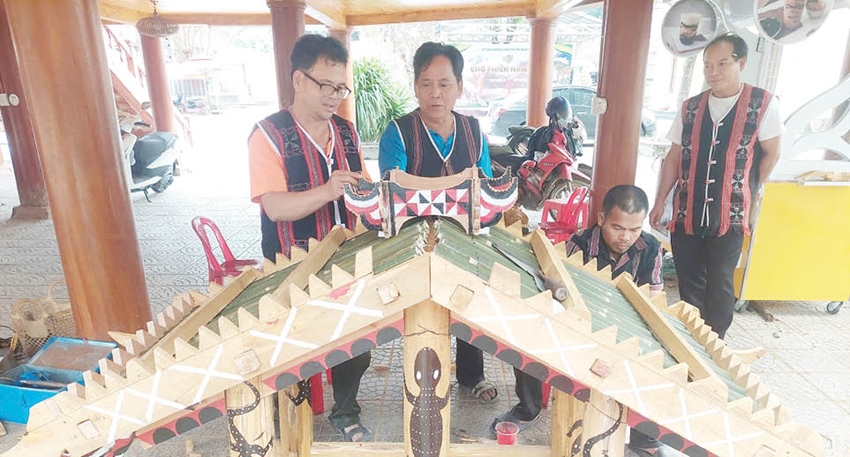 |
| The traditional tomb of the Co Tu people is a work of art that combines architecture, sculpture and spirituality. |
Preserving the national soul through every line
Coming from a family of tomb builders, Mr. Pham Xuan Tin began learning the trade at the age of 11. He often followed his father to remote villages, starting with simple tasks such as carving according to patterns his father had drawn.
When he reached a high level, he began to carve round statues around the tomb. He still remembers his first statues such as people carrying baskets, people dancing, people playing gongs... "My father was very proud when he saw these first works", he recalled. He became a famous sculptor in the villages.
One day in early December, at the communal house in the center of Nam Dong district, a group of Co Tu artisans were diligently carving and painting wooden blocks into works imbued with traditional cultural imprints. Among them, Mr. Pham Xuan Tin was known as the “grand master”. At the age of 70, he still maintains the passion and sense of responsibility for the profession passed down from father to son. “This job requires meticulousness and deep knowledge of culture, so I always carefully check every pattern and every detail,” Mr. Tin shared.
The traditional tomb of the Co Tu people is a work of art that combines architecture, sculpture and spirituality. From the columns, roofs to the motifs, everything has profound meaning, reflecting the worldview of the Co Tu people. In particular, the a chua (roof of the tomb) is considered the "soul" of the entire structure. The a chua is often carved in the shape of a buffalo head and a goat head, symbolizing the connection between the living and the dead, as well as respect for ancestors.
The day we arrived, Mr. Tin was editing the sour part of the model tomb. He erased some inaccurate patterns made by his students. For him, building a tomb is not only an art but also related to beliefs. Even the slightest mistake is unacceptable. Therefore, he always reminded his students to be careful, because this is not only a project for the deceased but also a spiritual heritage.
In addition to the a chua, the dugout coffin also shows the artist's sculpting skills and meticulousness. The coffin is made from a large tree trunk, split in half and hollowed out to place the body. The lid is carved with patterns similar to the a chua, creating harmony between the components. "The motifs on the coffin and the tomb all represent the Co Tu people's concept of the universe, life and death. From constellations, trees to animals such as geckos and roosters, all have profound meanings," Mr. Tin further explained.
With decades of experience, Mr. Tin has switched from using precious woods such as ironwood and ironwood, which are increasingly scarce, to alternative materials such as cement. However, he still retains traditional patterns to preserve cultural values.
Training the next generation to keep the profession
Since 2020, Mr. Pham Xuan Tin has spent more time teaching the craft to the younger generation. In Thuong Lo commune, he has opened a training class for 20 students, including both young people and experienced artisans. “Building tombs and carving statues are easy to learn, but talent is needed to achieve beauty,” he shared. Many of his students have won awards in competitions, such as Mr. Tran Van A Hinh, who won an Encouragement Prize at the Traditional Sculpture Creation Camp in 2023.
In addition to teaching, he also directly participates in local cultural preservation projects. The model tombs he and his students have made are not only practical, but also a valuable source of information, helping the younger generation understand and love their nation's heritage more. Mr. Pham Xuan Tin's dedication not only keeps the tomb carving profession alive, but also spreads the spirit of national cultural pride. His and his students' works are both works of art and symbols of love and respect for ancestors, community and homeland.
Source: https://baothuathienhue.vn/van-hoa-nghe-thuat/dai-su-phu-nghe-thuat-nha-mo-149570.html


![[PHOTO] Hanoi fences off demolition of "Shark Jaws" building](https://vphoto.vietnam.vn/thumb/1200x675/vietnam/resource/IMAGE/2025/5/25/1b42fe53b9574eb88f9eafd9642b5b45)
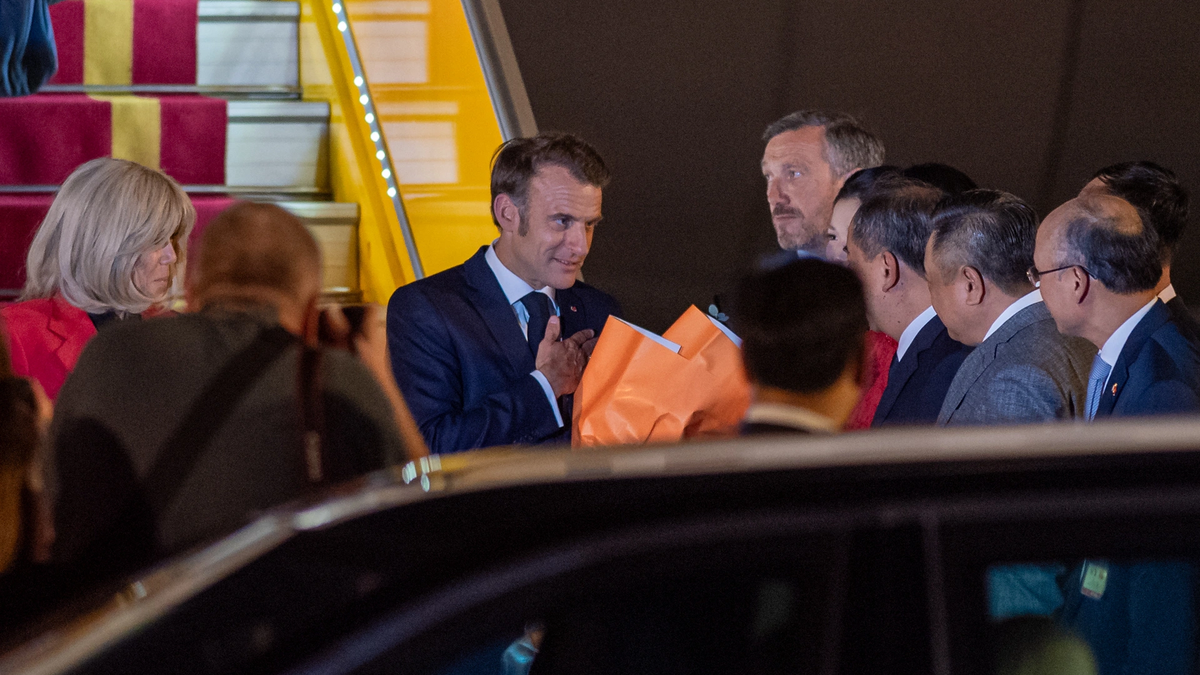
![[Photo] Welcoming ceremony for Prime Minister Pham Minh Chinh and his wife on an official visit to Malaysia](https://vphoto.vietnam.vn/thumb/1200x675/vietnam/resource/IMAGE/2025/5/25/dc30203c3ae24da3990266ec3b29bb2d)
![[Photo] French President Emmanuel Macron and his wife begin state visit to Vietnam](https://vphoto.vietnam.vn/thumb/1200x675/vietnam/resource/IMAGE/2025/5/25/03b59c7613144a35ba0f241ded642a59)
![[Photo] Ea Yieng commune settlement project abandoned](https://vphoto.vietnam.vn/thumb/1200x675/vietnam/resource/IMAGE/2025/5/25/57a8177361c24ee9885b5de1b9990b0e)
![[Photo] Funeral of former President Tran Duc Luong in Quang Ngai](https://vphoto.vietnam.vn/thumb/1200x675/vietnam/resource/IMAGE/2025/5/25/ccf19a3d8ea7450bb9afe81731b80995)
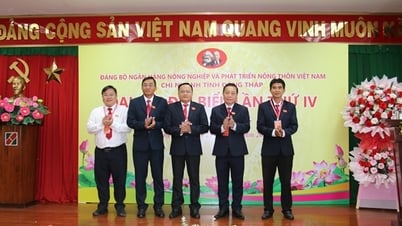

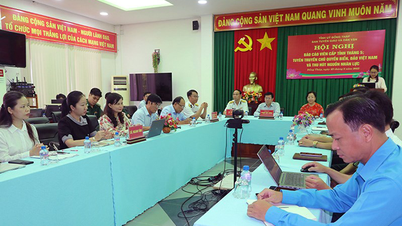
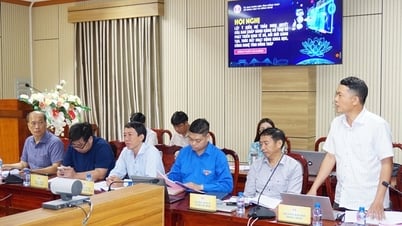

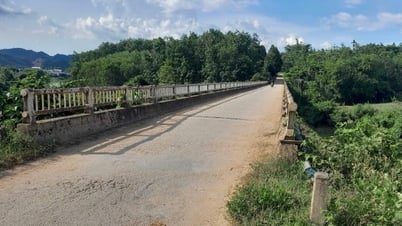





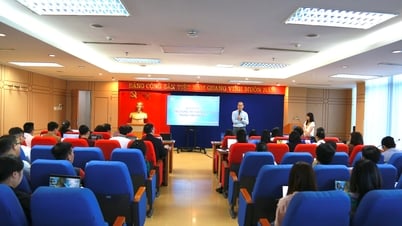




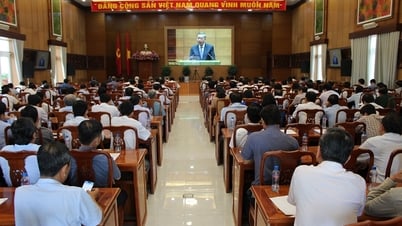




























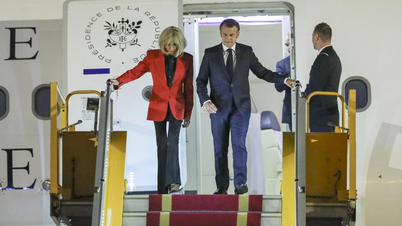
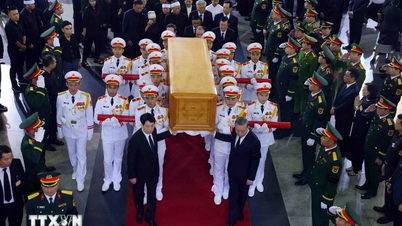
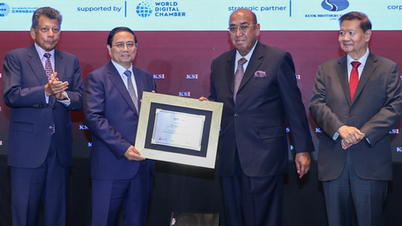

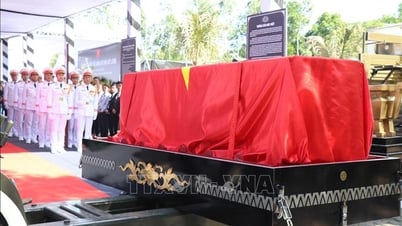













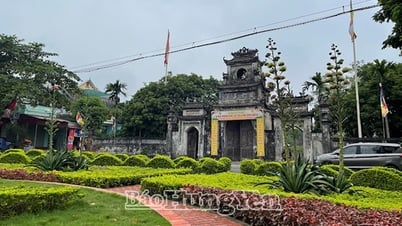



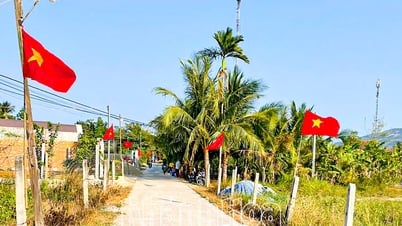














Comment (0)